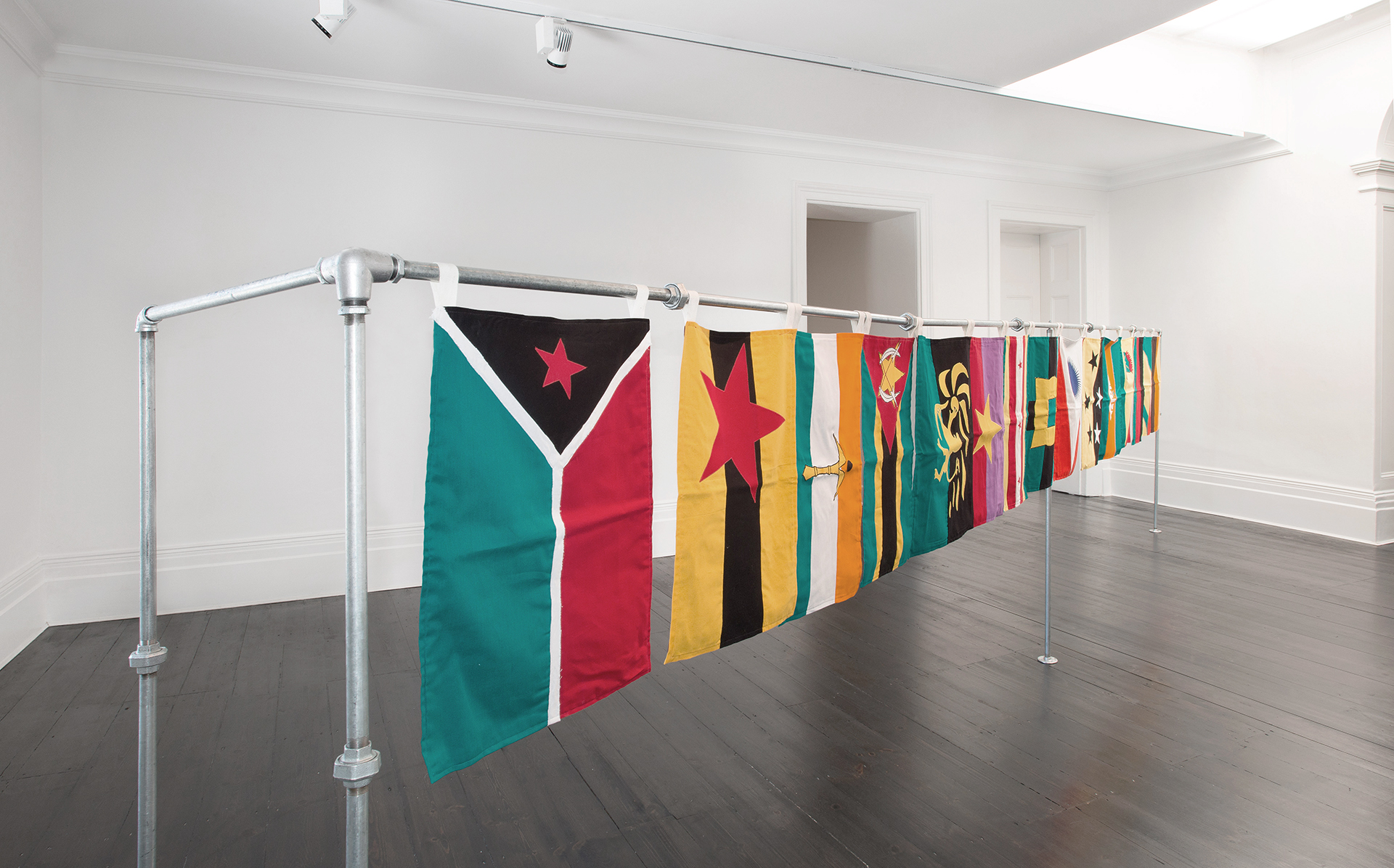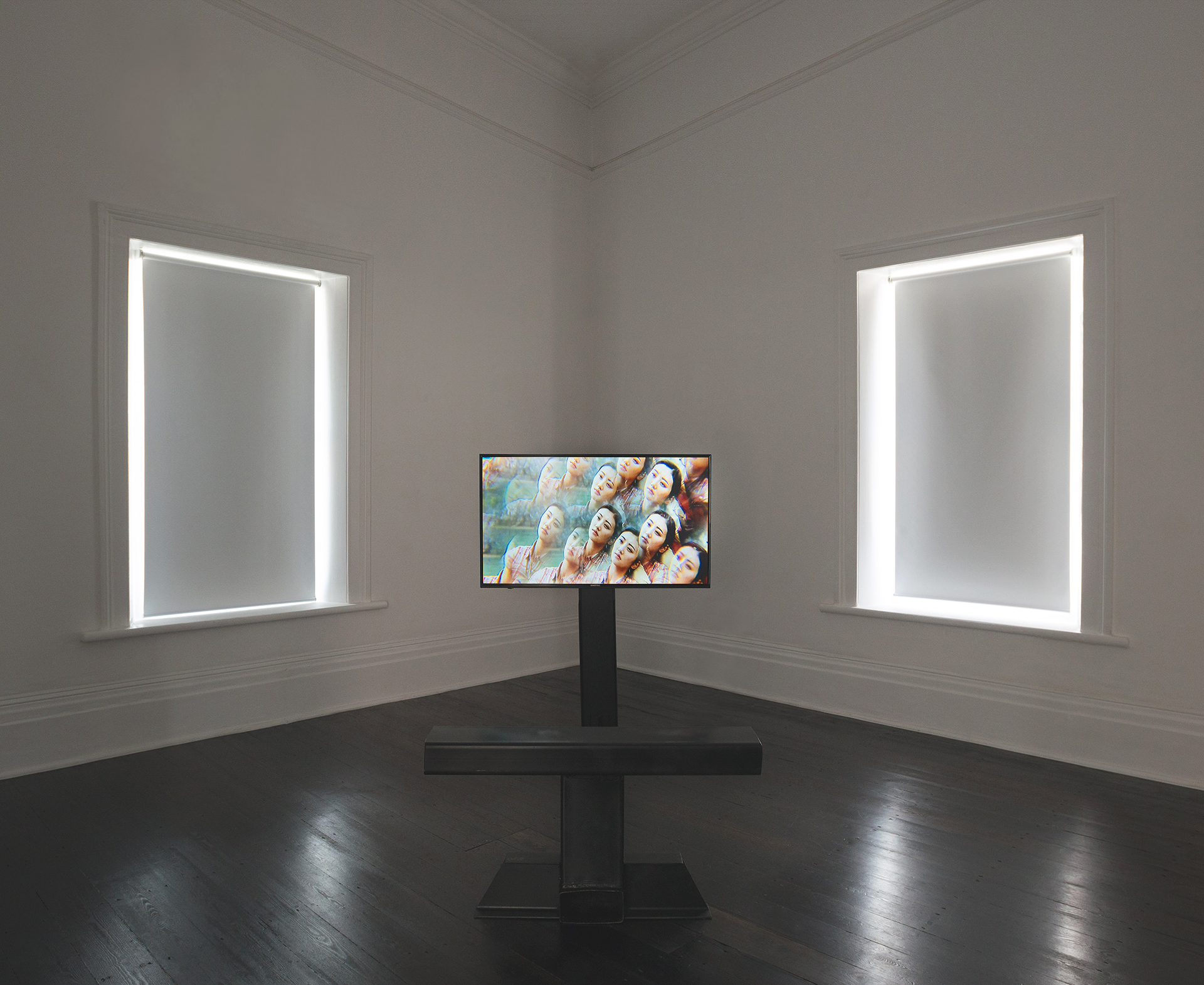I am increasingly drawn to the narrative capacity of objects – especially those repurposed from my immediate surroundings, that morph from utility to aesthetic, through processes of grafting imaginary and visible realities – as embodying compound ideas and multiple antecedents (both formally and conceptually) yet are not manifest. That are in fact resistant to overt communication. A process that dissects the works from both myself and the sum of their parts, forcing them – sometimes quite violently – to exist on their own terms, robbed of their former utility, and given new responsibilities.
‘A course sorting of the readily available’ as presented by Everard Read Gallery, Cape Town, is an inventory of works created by Michael MacGarry between 2011 to 2018 and features installation, video, sculpture and two-dimensional offerings. It’s title then is in reference to his repurposing practice in which found materials surrounding his Johannesburg studio are utilized for creation; in part, the title is a retrospective as the work dates back from 2011 to the present year.
In the works, a fascination with tools and construction becomes clear- implementing elements of structural engineering and steel fabrication; his expression is indicative of the nature of an artist- to create- as well as a malaise that exists between being an artist versus being a creator of buildings, tools or weaponry. Defiantly questioning the nature of this, the artist does so in his mark making with elements surfacing smooth welding juxtaposed by more rugged techniques.

The show exhibits ongoing new works from the series Tontine- large scale sewn fabric making use of found cement packet paper registering industrial progression and infrastructural growth in Sub-Saharan Africa. Exhibiting four new works for the first time the occurrence is indicative of MacGarry’s formal divergence by including logos and symbols from the 1980s that reflect emblems of entertainment technology from his youth as well as extraterrestrial sway depicted in the experiences of the Dogon peoples of Mali. Canicula (2018), Sirius and the Spider (2018) in particular examine the history of Western anthropological intrusion and its conjuring of myth in the 19th century reading of the Dogon people’s knowledge surrounding the Sirius star system. This blunder as stated in the show’s press release, resulted in a toxic ‘ancient astronauts’ field of conspiracy theory that was later disproved in the 1990s by Walter Van Beekin.
PLAY, DIE, RESTART debases the cinematic legacies of Heart of Darkness (Conrad, 1902). A refilming of Kong: Skull Island (2017) the visual component is disrupted by making use of a fractal lens with the original audio screen; and is influenced by the use of Francis Ford Coppola’s Apocalypse Now’s second-hand narrative vanity of an up-river journey into the Heart of Darkness. PLAY, DIE, RESTART unfolds dated approaches of colonial era depiction. Representations of Africa in film, both the real and imagined are explored in various works including Blomkamp’s District 9 (2009) in Private Grammar II (2011), through the Warner Bros. branded 35mm film reels of Porte-parole (2018) and in Posuban (2016).
The personal historical that ceases to exist in the present is explored by manner of documented self-presentation in Parang (2017) and Der Magnetiseur (2018). Parang is a two-channel video operating in the scope of Harrald Szeemann’s idea of ‘individual mythologies’ making use of an omni linear routing through one channel, it follows the lifecycle of a silk worm. Paring this narrative with a second video channel that acts as disruption, these are architectural depictions from MacGarry’s personal and familial history in stop-motion animation. The endless loop then an exercise in the absurdity of the construction of the self as well as place.

Inside a naïve rendition of a vehicle a full-length video titled Der Magnetiseur (2018) – the title pulled from the Prussian Romantic author E.T.A. Hoffmann’s (1776-1822) short story by the same title – takes place playing out a carnival, ‘freak’-like self portrait of MacGarry. A 60-minute composition on a digital piano played with extended prosthetic arms as he is poised on a slow rotating platform facing a House of Mirrors set. In order to fully grasp the artist’s intent, I would suggest reading a synopsis on the original tale as his work closely references the same carnivalesque world therein accentuating the satirical.
It will be paradise.
This is hell.
It was paradise.
We store value in objects, and demand their obedience. We generate data-centric futures and gamble on conjecture within constellations of falsified existences founded on visibility as capital. Merely aspirant in our revolutions and content with only a usable present, we imagine a coming condition not borne of the present.
Registering abstractions the individual works speak to the individual making of place and self within present South Africa.


























































